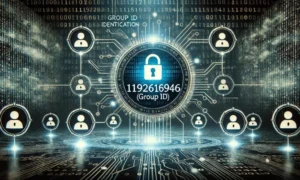The world of technology is big, and some things, like IP addresses, are everywhere, even if we don’t always see them. Today, we’re going to explore what “10.10.60.2120” means in the world of computers and the internet. You might have seen numbers like this before, but have you ever wondered what they actually do?
An IP address, like 10.10.60.2120, is similar to a phone number for your computer. Just as each phone number helps identify people and lets them talk, an IP address helps computers find each other on the internet. This guide will take you through all you need to know about IP addresses in a simple way, so even if you’re new to this, you’ll understand.
What Is an IP Address?
An IP address, or Internet Protocol address, is a special number given to every device connected to the internet. It’s like a digital name tag for each computer, phone, or other gadget. The IP address lets these devices communicate, making sure the right information goes to the right place.
When we see an IP address like 10.10.60.2120, it’s usually part of a local network—a smaller system where devices are connected, like in a home, school, or office. These IP addresses make sure data flows correctly from one device to another.
Types of IP Addresses
Not all IP addresses are the same. They can be sorted into different types depending on where and how they’re used. Here are the main types:
- Public IP Addresses: Used on the internet so any computer anywhere can connect to it.
- Private IP Addresses: Used in local networks to keep data within a certain group of devices.
- Static IP Addresses: IPs that don’t change and are fixed for certain devices.
- Dynamic IP Addresses: Temporary IPs assigned by routers to devices on a network.
In this case, 10.10.60.2120 is a private IP address, meaning it’s used in a closed network, not on the wide internet.
Why Are Private IP Addresses Important?
Private IP addresses like 10.10.60.2120 are helpful because they keep information safe and organized within smaller networks. In big buildings, companies, or even in homes, there might be multiple devices—computers, phones, printers, or even smart TVs—all connected and needing their own IP address to work smoothly together.
When a device is given an IP address like 10.10.60.2120, it’s part of a special “pool” of numbers that the router assigns to each device in that network. This way, everyone’s data goes to the correct device.
How Do IP Addresses Work?
Let’s imagine you’re sending a letter. To make sure it reaches the right person, you’d include an address. Similarly, IP addresses make sure that information like emails, files, or messages gets to the right computer or device.
When you send or receive data, the IP address acts as a guide. For instance, if you’re watching a video online, your device’s IP address is used to receive the video stream. Without an IP address, it would be like sending a letter with no return address; it wouldn’t know where to go.
Also read here: Understanding 321-252-9456 and What It Means for You
What Makes 10.10.60.2120 Special?
Now, you may be wondering, “Why does 10.10.60.2120 look different from other IP addresses?” The answer is that different networks need different addresses to avoid confusion. Private IP addresses, like 10.10.60.2120, are reserved for devices within local networks, meaning they’re not used for websites or public internet traffic.
These private IP addresses help organize data within one building or location, making them useful for home networks, small offices, and large businesses. With private IPs, companies can connect many devices without worrying about them overlapping with others on the internet.
The Structure of IP Addresses
IP addresses have a special structure, written as four sets of numbers divided by periods (.). Each part represents a different part of the IP address:
- First Part (10): This part identifies the main network.
- Second Part (10): This could represent a smaller part within the main network.
- Third Part (60): A sub-section or group within the smaller network.
- Fourth Part (2120): The specific device or “host” ID within that section.
Each section can only go up to 255, giving us a limited number of possible IP addresses. Private IP addresses, like 10.10.60.2120, often follow specific patterns set aside by the organization.
IP Addresses and Security
Using a private IP address like 10.10.60.2120 helps protect information within local networks. Since it’s not a public address, hackers or outside users can’t easily access it. In larger networks, companies can create multiple private IP addresses, adding an extra layer of protection.
Network administrators often set firewalls and other security systems to block access to unknown users, ensuring that only trusted devices within the same network can connect.
How to Find Your IP Address
Finding an IP address like 10.10.60.2120 is easy if you know where to look. Here’s a simple guide:
- On a Computer: Go to “Settings” > “Network & Internet” > “Wi-Fi” or “Ethernet,” then check “IP Address.”
- On a Phone: Go to “Settings” > “Wi-Fi” > tap on the network you’re using to see the IP address.
Your device might show a private IP address, which will look similar to 10.10.60.2120 if you’re connected to a home or work network.
Conclusion: Why IP Addresses Matter
Every time you go online, IP addresses work in the background, making sure everything connects smoothly. IP addresses like 10.10.60.2120 keep information safe and organized, allowing devices to work together in harmony within networks.




